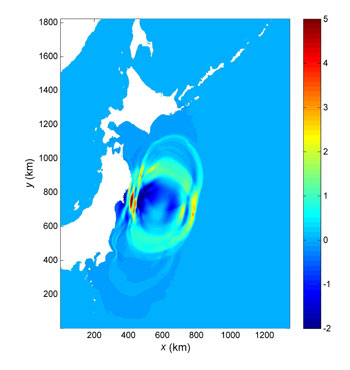GPU Based Hydrodynamic Modelling of Tsunami
Application of a GPU Based Hydrodynamic Model in Tsunami Simulations
PhD research project: Reza Amouzgar
This project will provide a new practical tool for multi-scale tsunami modelling based on high performance computing. The project will build upon existing schemes to develop a numerical model for tsunami propagation and inundation. Tsunami simulations commonly cover large spatial domains. Therefore, in order to substantially improve computational efficiency, the model is implemented for graphics processing units (GPU) using CUDA.
Possible applications include:
- Evacuation planning
- Real-time tsunami warning systems
- Risk management
- City planning
Tsunami's can be very destructive causing large loss of life. The recent tsunami, which hit Japan in March 2011, was catastrophic in its effects. More than 15,000 people were killed, and significant damages were caused to buildings and infrastructure including several power plants.
Early warning systems are an effective means of mitigating loss of life. These systems enable the quick evacuation of vulnerable coastal areas to safer areas of land.
The hydrodynamic tsunami model will provide a valuable tool in the development of early warning systems. The model will predict how tsunamis move and behave. This simulation of the propagation and run-up of tsunamis will provide a vital tool in risk assessment, evacuation planning and, more recently, real-time forecasting for tsunami warning systems.
A numerical scheme, which solves the shallow water equations (SWE’s), is employed in this work. This method is particularly suited to the nature of the Tsunami propagation and inundation. Tsunamis generated by earthquakes are commonly considered as long-waves and can be mathematically described by the non-linear shallow water equations.
This work presents a numerical model which solves the 2D SWE's using a finite volume (FVM) Godunov type scheme incorporating a HLLC approximate Riemann solver. The scheme is shock capturing and so is applicable to the rapidly varying flows observed in tsunami events.

